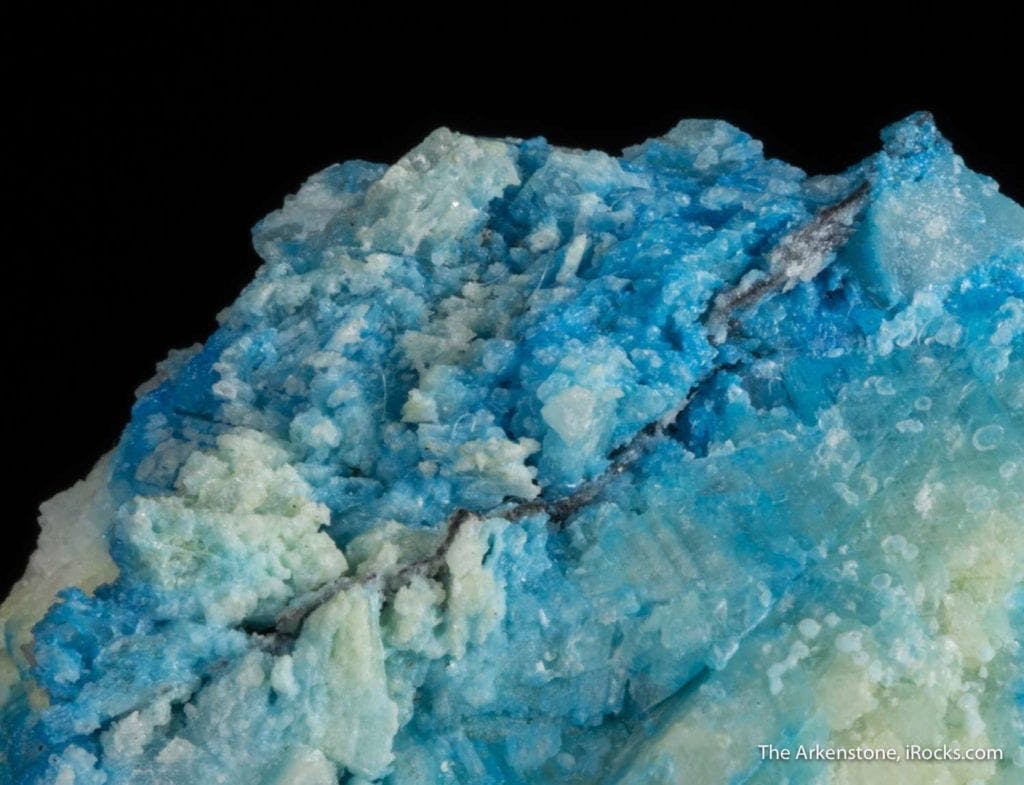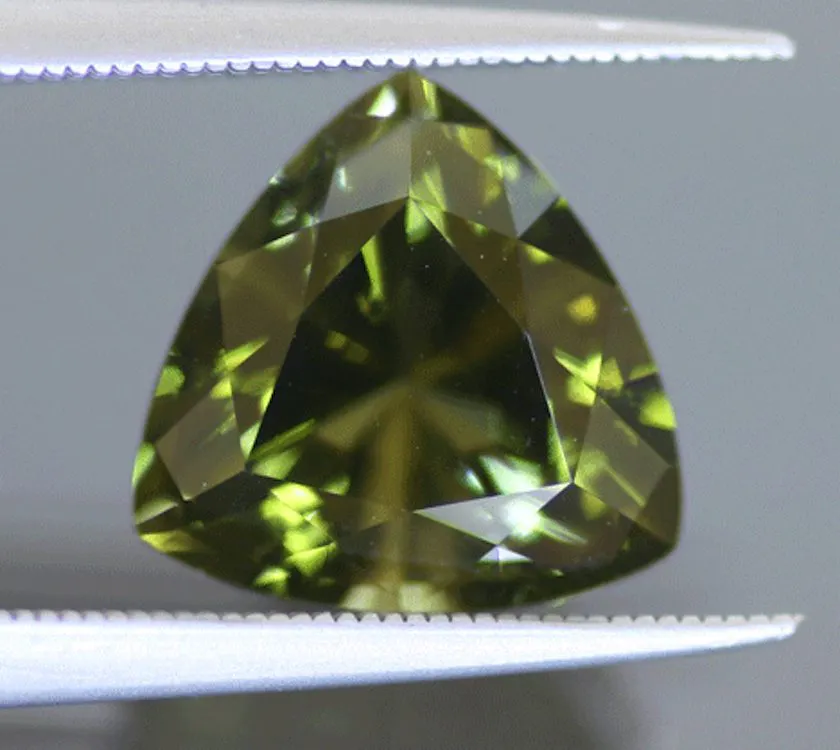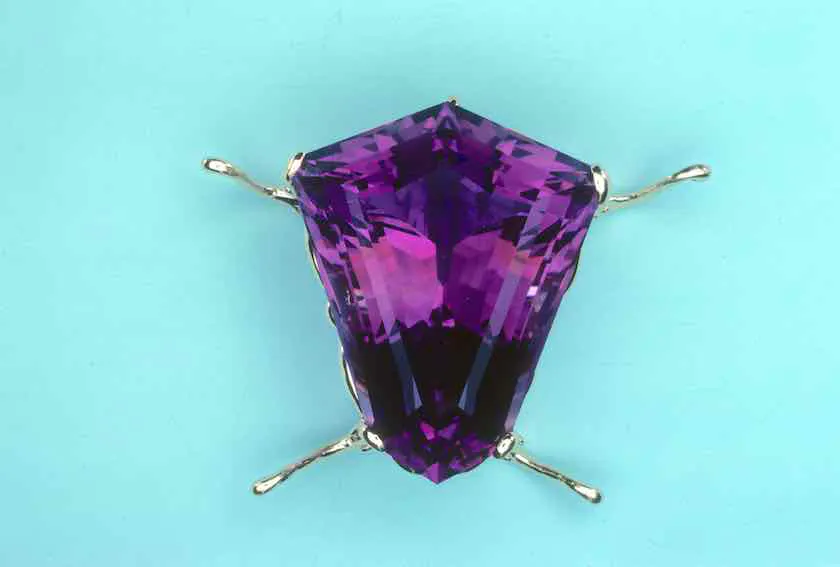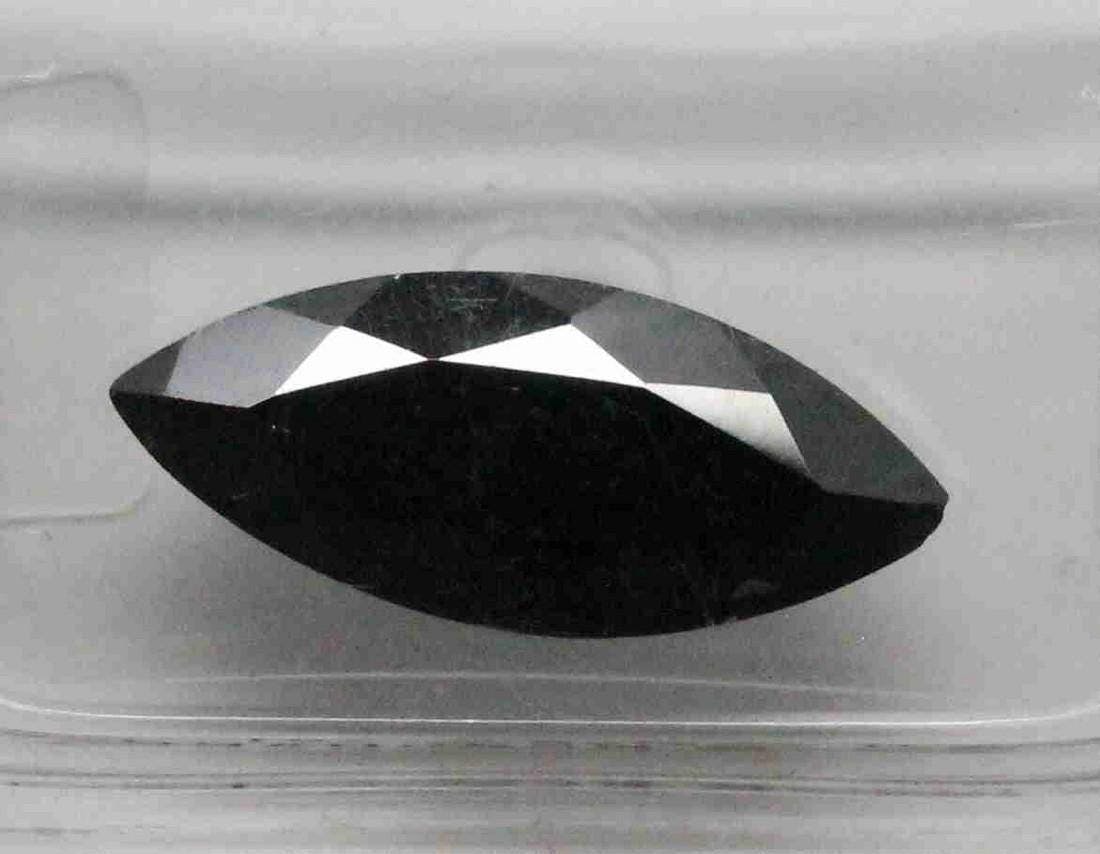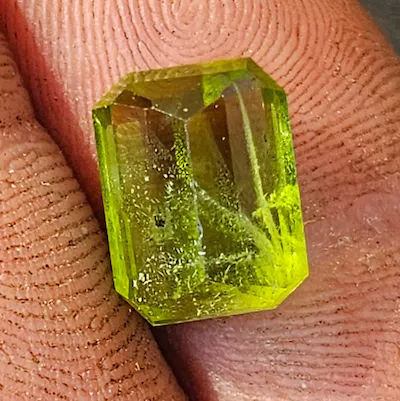Information about Gemstone Necklaces, News
The History and Prized Beauty of Turquoise
Transport yourself back thousands of years to a time when the world was enamored by the captivating beauty of turquoise. This gemstone, with its enchanting sky blue to blue-green tones, not only symbolizes December birthdays but also holds a special place in the realms of American Southwestern and Native American jewelry. At Melogems, we invite you to delve into the joy of discovering the factors that contribute to the value of turquoise— from the uniformity of its color to the richness of its saturation and the perfection of its polish. Join us on a journey as we unravel the deep-rooted history, cherished beauty, and intriguing characteristics of turquoise. This gemstone, a timeless symbol that has endured through the ages, continues to be adored and cherished by many. Explore our collection at Melogems.com to witness the allure of turquoise for yourself.
The Origin and Early Uses of Turquoise
Early Discovery of Turquoise
Turquoise, with its captivating sky blue to blue-green hues, has a rich history that spans thousands of years. The gemstone was first discovered by ancient civilizations, who were undoubtedly mesmerized by its striking beauty. The exact origins of turquoise are difficult to pinpoint, as it has been mined in various regions around the world. However, it is believed that the earliest turquoise mines were located in present-day Iran and Egypt.
Turquoise in Ancient Cultures
Throughout history, turquoise held great significance in many ancient cultures. The Egyptians, for instance, considered turquoise to be a sacred stone and associated it with protection and good fortune. They often used it to adorn jewelry, statuary, and even in the elaborate headdresses of their pharaohs. In Mesopotamia, the Sumerians and Babylonians also highly valued turquoise and used it in their artwork and royal jewelry.
In Central and South America, the Aztecs and the Mayans held turquoise in high regard. They believed that the stone had mystical properties and used it for ceremonial purposes, as well as in intricate carvings and mosaics. The Native American tribes of the southwestern United States also revered turquoise and viewed it as a symbol of wisdom, protection, and connection to the spirit world.
The Use of Turquoise in Jewelry
Turquoise has long been prized for its aesthetic appeal, making it a popular choice for jewelry throughout history. Its vibrant colors evoke a sense of tranquility and natural beauty, making it a versatile gemstone that can be incorporated into various jewelry designs. From necklaces and bracelets to earrings and rings, turquoise adds a touch of elegance and uniqueness to any accessory.
In Native American and Southwestern jewelry, turquoise is a staple. The turquoise stones are meticulously handcrafted into intricate silver settings, creating one-of-a-kind pieces that reflect the rich cultural heritage of the indigenous people. These pieces often feature a combination of turquoise and sterling silver, resulting in stunning works of art that showcase the beauty of both materials.
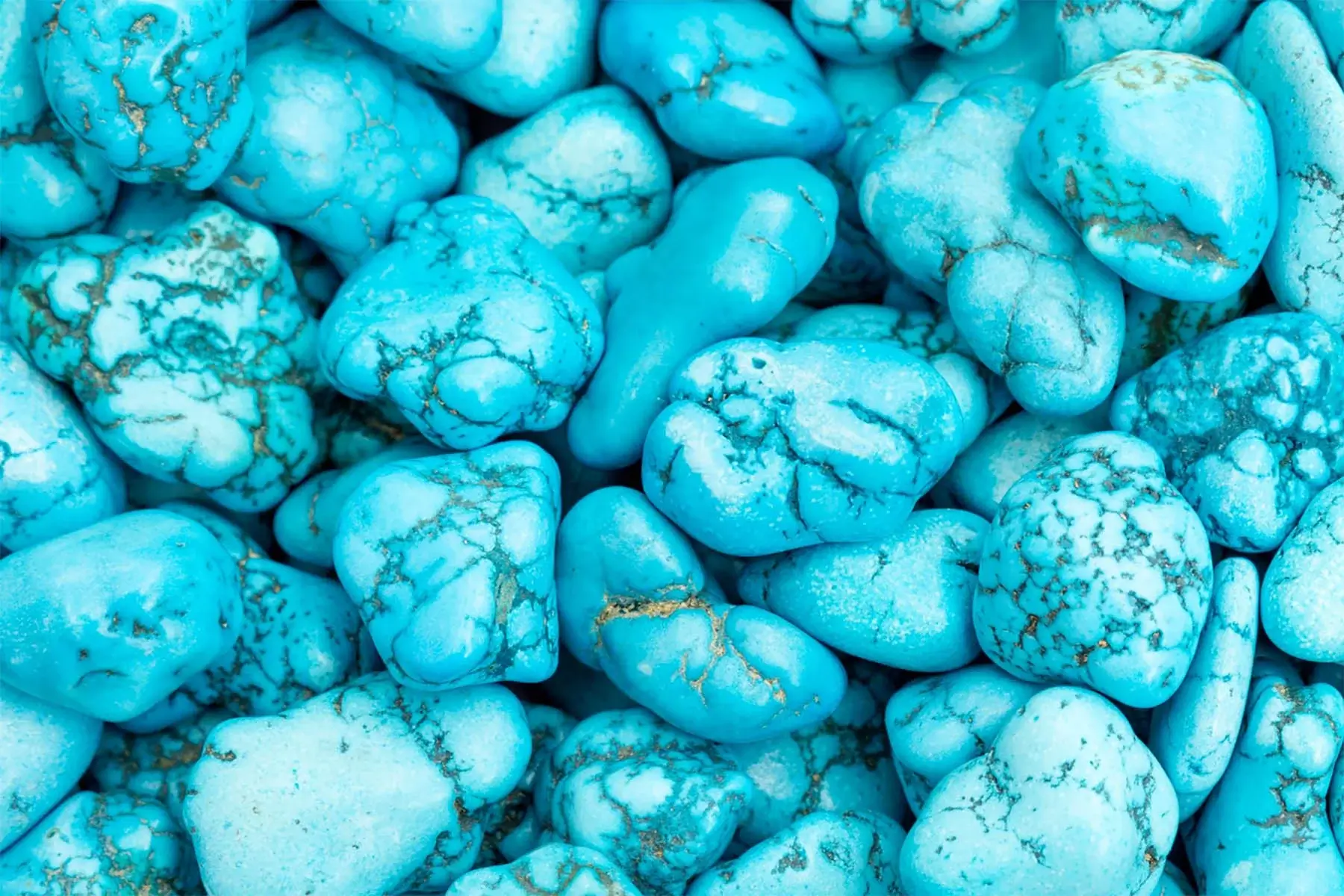
The Geological Formation and Composition of Turquoise
Formation of Turquoise
Turquoise is formed through a complex geological process that begins with the interaction of water and certain minerals in the earth’s crust. Typically, turquoise is found in arid regions where water percolates through the ground and reacts with copper-rich minerals. Over time, this chemical reaction leads to the formation of turquoise.
The presence of copper is crucial in the formation of turquoise, as it provides the distinctive blue and green hues that the gemstone is known for. Other minerals, such as aluminum and phosphorus, also play a role in the coloration of turquoise. The geological conditions required for turquoise formation are relatively rare, and this contributes to its scarcity and value.
Composition and Physical Properties
Chemically, turquoise is a hydrous phosphate of aluminum and copper. Its chemical formula is CuAl6(PO4)4(OH)8·4H2O. The combination of copper and aluminum gives turquoise its distinctive color, while the presence of water molecules contributes to its structure and physical properties.
Turquoise is a relatively soft gemstone, ranging from 5 to 6 on the Mohs scale of hardness. This makes it susceptible to scratching and abrasion, so proper care is essential to maintain its beauty. Additionally, turquoise has a waxy to subvitreous luster and a specific gravity of approximately 2.6–2.8, which aids in its identification.
Discover ruby jewelry at Melogems
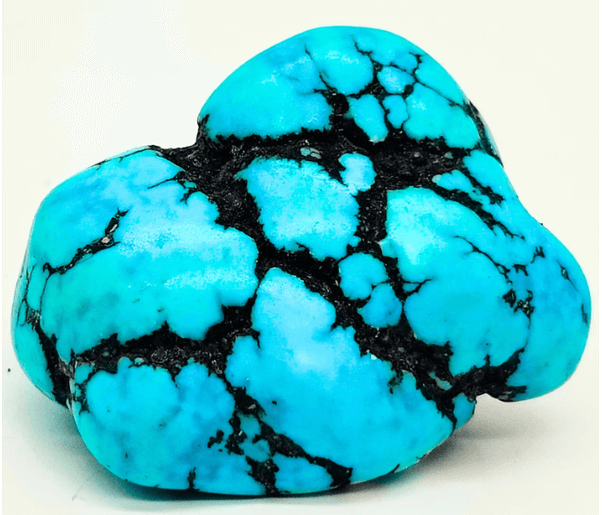
Turquoise as a Birthstone and its Cultural Significance
Turquoise as the Birthstone for December
In the realm of birthstones, turquoise takes center stage as the gemstone associated with the month of December. As such, individuals born in December have the privilege of claiming turquoise as their designated birthstone. This connection between turquoise and December is steeped in ancient traditions and cultural symbolism.
The association of turquoise with December is said to date back to biblical times when the twelve stones adorning the breastplate of Aaron, the high priest, represented the twelve tribes of Israel. While the exact identities of the gemstones mentioned in the Bible are a subject of debate, many believe that turquoise may have been one of the stones used.
Turquoise in Native American and Southwestern Jewelry
Turquoise holds a prominent place in Native American and Southwestern jewelry, where it is not only celebrated for its inherent beauty but also revered for its cultural significance. For centuries, Native American tribes, such as the Navajo, Zuni, and Hopi, have incorporated turquoise into their jewelry as a way to honor their heritage and express their spiritual beliefs.
Each tribe has its distinctive style, with unique design elements and techniques that have been passed down through generations. The Navajo, for example, are known for their intricate silverwork and use of large, vibrant turquoise stones. The Zuni, on the other hand, are renowned for their intricate inlay work, which often features turquoise alongside other colorful gemstones.
Southwestern jewelry, which draws inspiration from Native American designs, also prominently features turquoise. The artistry and craftsmanship that go into creating these pieces make them highly coveted by collectors and jewelry enthusiasts alike.
Symbolism and Cultural Significance of Turquoise
Turquoise carries deep symbolism and cultural significance in various societies and spiritual traditions. Across many cultures, turquoise is believed to possess powerful protective properties and is often used as a talisman to ward off negative energy and bring good fortune.
In Native American cultures, turquoise is considered a sacred stone that symbolizes harmony, spiritual attunement, and connection to the natural world. It is believed to have the power to heal and purify, making it an integral part of ceremonial rituals.
Throughout history, turquoise has also been associated with love, friendship, and loyalty. It is often exchanged between loved ones as a symbol of affection and connection. The vibrant color of turquoise is said to represent the open sky and the boundless possibilities that life has to offer.
Overall, turquoise holds a special place in many traditions and cultures, serving as a reminder of our connection to the earth and the inherent beauty that surrounds us.
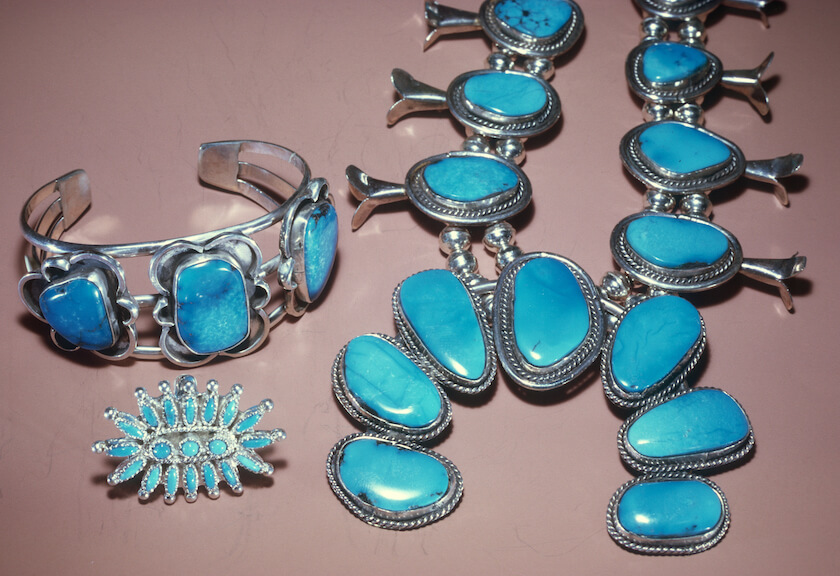
Factors Affecting the Value of Turquoise
Color Grading of Turquoise
When it comes to valuing turquoise, color is one of the most significant factors that come into play. The color of turquoise can vary greatly, ranging from pale sky blue to intense greenish-blue hues. The most desirable color is a pure and vibrant robin’s egg blue or a striking sky blue. Stones with an even distribution of color throughout are generally considered more valuable.
Importance of Color Evenness and Saturation
In addition to the specific hue, evenness and saturation of color are crucial in determining the value of turquoise. The color should be consistent throughout the stone, without any blotches or areas of uneven saturation. Stones with an intense and rich color, known as high saturation, are generally more valuable and sought after.
Desirable Matrix Patterns in Turquoise
Matrix refers to the dark, veiny patterns present in some turquoise stones. These patterns occur when other minerals, such as iron or limonite, mix with the turquoise during its formation. Matrix patterns can add unique character and beauty to turquoise, and the presence of an appealing matrix can significantly increase the value of a stone.
One of the most sought-after matrix patterns is known as the spiderweb matrix. This pattern resembles a delicate spider’s web and is highly prized for its intricate and artistic appearance. Spiderweb turquoise is often considered a collector’s item and commands a higher price in the market.
Polish and Stabilization
The polish of a turquoise stone also affects its value. A well-polished stone will have a smooth and glossy surface, enhancing its overall appearance. Some turquoise stones may require stabilization to improve their hardness and durability. Stabilization involves the introduction of epoxy or resin to fill any fissures or cavities, thus increasing the stone’s strength and preventing damage.
While stabilized turquoise can still have value, natural, untreated stones are generally considered more desirable and fetch higher prices in the market. The preference for natural turquoise stems from the belief that it retains the pure essence and energy of the earth, without any external interference.
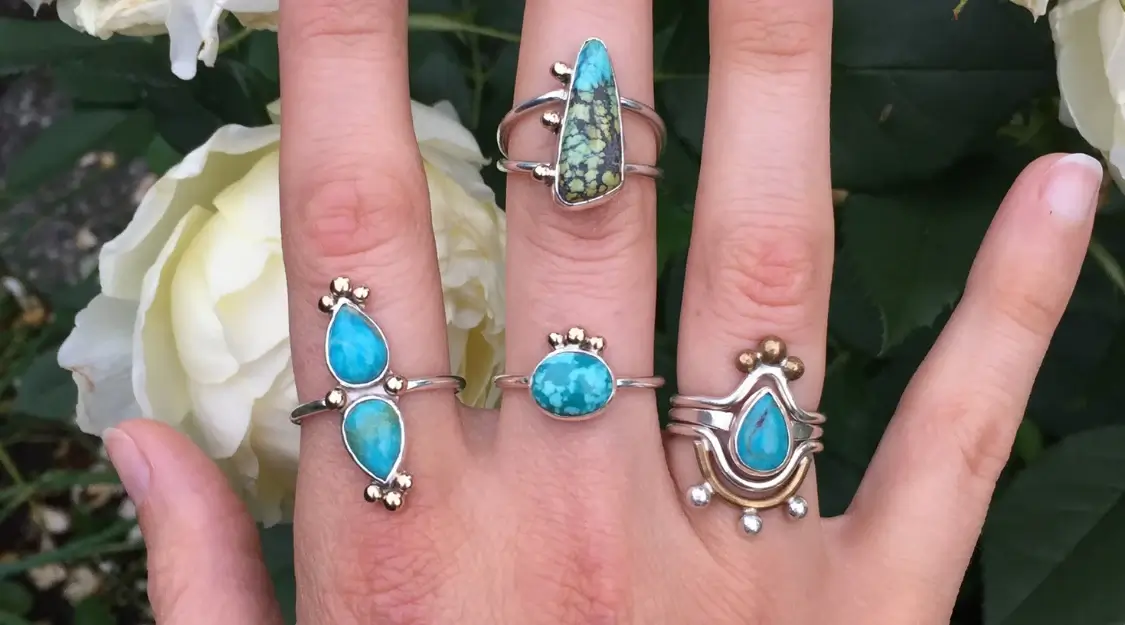
The Fascination with Spiderweb Turquoise
Characteristics of Spiderweb Turquoise
Spiderweb turquoise is a variety of turquoise renowned for its intricate matrix pattern that resembles a delicate spider’s web. This distinctive pattern sets it apart from other types of turquoise and creates a mesmerizing visual effect. The fine lines and intricate web-like design give spiderweb turquoise a captivating and artistic appeal.
The matrix in spiderweb turquoise can vary in color, ranging from brown and black to golden or reddish hues. This juxtaposition of different colors against the vibrant blue-green turquoise creates a striking contrast that further enhances the beauty of the stone.
Demand and Rarity
Due to its unique matrix pattern and visually appealing characteristics, spiderweb turquoise is highly sought after by collectors and jewelry enthusiasts. The scarcity of this particular variety further adds to its allure and desirability.
Spiderweb turquoise is relatively rare and can be challenging to find in large and high-quality pieces. The intricate matrix pattern requires specific geological conditions during the stone’s formation, making it a rare occurrence in nature. As a result, spiderweb turquoise is considered a valuable and coveted gemstone.
Famous Spiderweb Turquoise Mines
Several mines around the world have gained fame for producing exquisite spiderweb turquoise. One of the most renowned sources of spiderweb turquoise is the Kingman Mine in Arizona, USA. Kingman turquoise is celebrated for its vibrant blue color and intricate spiderweb matrix, making it a favorite among jewelry designers and collectors.
Another notable source of spiderweb turquoise is the Sleeping Beauty Mine, also located in Arizona. Sleeping Beauty turquoise is highly revered for its clear, robin’s egg blue color and distinctive web-like matrix. This mine, unfortunately, ceased production in 2012, further contributing to the rarity and value of Sleeping Beauty spiderweb turquoise.
Other noteworthy spiderweb turquoise mines include the Carico Lake Mine in Nevada, the Badger Mine in Colorado, and the Otteson’s Blue Moon Mine in Nevada. Each mine produces its unique variety of spiderweb turquoise, showcasing the diverse and mesmerizing beauty of this coveted gemstone.

Turquoise in Jewelry: Its Versatility and Affordability
Types of Jewelry Featuring Turquoise
Turquoise is an incredibly versatile gemstone that can be incorporated into various types of jewelry. From statement necklaces to delicate rings, there are endless possibilities when it comes to designing pieces featuring turquoise.
One of the most popular forms of turquoise jewelry is the turquoise necklace. Whether it’s a single pendant or a multi-strand piece, turquoise necklaces make a bold statement and add a pop of color to any outfit. Turquoise earrings are another popular choice, ranging from dainty studs to dramatic chandelier designs.
Turquoise bracelets and bangles are also highly sought after, often featuring intricate silverwork or inlay techniques. Rings adorned with turquoise stones are timeless and elegant, with designs ranging from simple bands to intricate settings.
Turquoise in Fashion and Contemporary Designs
Turquoise has long been a favorite in the realm of fashion and contemporary jewelry designs. Its vibrant color and versatility allow designers to create pieces that cater to various tastes and style preferences.
In recent years, turquoise has made a resurgence in the fashion industry, with designers incorporating the gemstone into their collections. From runway shows to red carpet events, turquoise jewelry has graced the necks, ears, and wrists of celebrities, further solidifying its place as a fashionable and desirable gemstone.
Contemporary jewelry designers also embrace the beauty of turquoise, experimenting with unique cuts and settings to showcase the gemstone’s inherent allure. Whether it’s a minimalist piece or a bold, artistic creation, turquoise continues to captivate and inspire designers worldwide.
Affordability of Turquoise Compared to Other Gemstones
One of the reasons why turquoise has remained popular throughout history is its affordability compared to other gemstones. While gemstones like diamonds, rubies, or emeralds can be prohibitively expensive for many, turquoise offers an accessible alternative without compromising on beauty or quality.
The relatively low cost of turquoise allows individuals to own and enjoy genuine gemstone jewelry without breaking the bank. Its affordability also opens up opportunities for designers to create pieces that cater to a wide range of budgets, making turquoise jewelry accessible to a broader audience.
For those who appreciate the beauty and symbolism of gemstones but may be working within a limited budget, turquoise provides an excellent option to add a touch of elegance and color to their jewelry collection.
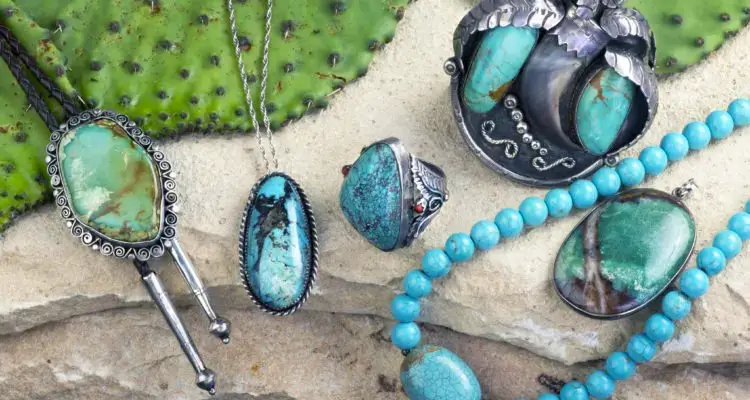
The Influence of Trace Elements on Turquoise’s Color
Copper as the Primary Color Influencer
Copper is the primary trace element responsible for the iconic blue and green colors found in turquoise. The presence of copper ions within the crystal structure of turquoise absorbs certain wavelengths of light, resulting in the characteristic blue and green hues that are highly prized.
The exact amount of copper present determines the specific color of the turquoise. Higher copper content leads to more intense blues, while lower copper levels result in greener shades. Copper is also responsible for the striking color change phenomenon observed in certain turquoise stones, where the color transitions from blue in daylight to green in artificial light.
Other Trace Elements and their Effects
While copper is the primary color influencer in turquoise, other trace elements can also impact the gemstone’s color and overall appearance. Chromium, for example, can contribute to the formation of turquoise with a more greenish hue. Iron can introduce brown or reddish tints to the turquoise, adding depth and complexity to its color palette.
The presence and combination of these trace elements within the crystal structure of turquoise create a range of fascinating colors, making each stone a unique work of art. The delicate balance of these elements gives turquoise its distinct beauty and charm and adds to its allure as a gemstone.
Identifying Characteristics of Turquoise
Specific Absorption Lines in Turquoise
Turquoise possesses distinctive absorption lines in its spectrum that can help in its identification. When light passes through a turquoise gemstone, certain wavelengths are absorbed by the copper ions present. These absorption lines create gaps or dark bands in the gemstone’s spectrum, which can be viewed using specialized tools.
These specific absorption lines are unique to turquoise and serve as a key identifying characteristic. Gemologists and experts can analyze the absorption spectrum of a stone to determine whether it is genuine turquoise or an imitation.
Measurement of Specific Gravity
Specific gravity is another characteristic that can be used to identify turquoise. Specific gravity is the ratio of an object’s density to the density of water. Different gemstones have specific gravity values that fall within specific ranges, and turquoise has a specific gravity typically around 2.6–2.8.
To measure the specific gravity of a turquoise stone, gemologists use a precise method involving weighing the stone in air and then weighing it again when suspended in water. By comparing the two weights, the specific gravity can be calculated, providing additional information in the identification process.
Other Identifying Properties
In addition to specific absorption lines and specific gravity, turquoise possesses other identifying properties that can aid in its identification. These properties include its distinctive color and luster, Mohs hardness, and refractive index.
The color of turquoise, ranging from sky blue to blue-green, is its most recognizable characteristic and can often be used to distinguish it from other gemstones. Turquoise has a waxy to subvitreous luster, which gives it a smooth and slightly glossy appearance.
On the Mohs scale of hardness, turquoise typically ranges from 5 to 6, making it relatively soft compared to other gemstones. This means that turquoise is more susceptible to scratching and should be handled with care to preserve its beauty.
The refractive index of turquoise, which measures how light is bent as it passes through the gemstone, can also provide valuable information. However, refractive index alone is not sufficient for a conclusive identification, as it can vary depending on the specific variety and origin of the turquoise.
By examining and analyzing these identifying properties, gemologists and experts can accurately identify turquoise and distinguish it from other gemstones or imitations.
Distinguishing Natural and Synthetic Turquoise
Magnification and Observing Telltale Signs
To differentiate between natural and synthetic turquoise, experts often rely on magnification and observation of certain telltale signs. Under magnification, natural turquoise reveals its unique characteristics, while synthetic turquoise may exhibit different features.
Natural turquoise often displays a slightly irregular texture, with tiny pores and veins, indicating its organic origin. The matrix patterns, if present, also exhibit natural variations and intricacies. In contrast, synthetic turquoise may appear more uniform and possess a more artificial-looking texture.
Additionally, microscopic examination can reveal the presence of fillers or bonding agents, which are often used in the production of synthetic turquoise. These telltale signs, when observed under magnification, can aid in differentiating between natural and man-made turquoise.
Synthetic Turquoise and its Characteristics
Synthetic turquoise, also known as simulated or imitation turquoise, is created in laboratories to mimic the appearance of natural turquoise. Various techniques are used to produce synthetic turquoise, including the bonding of turquoise powder with resins or other materials.
Although synthetic turquoise can closely resemble natural turquoise in terms of color and appearance, it lacks the unique characteristics and properties found in natural stones. The distinct matrix patterns and identifying features present in natural turquoise are often absent in synthetic versions.
Furthermore, synthetic turquoise may exhibit a more vibrant or saturated color than natural turquoise. This is because synthetic stones can be manipulated to achieve specific hues, whereas natural turquoise obtains its color from trace elements and natural processes.
By carefully examining the stone’s characteristics and considering the absence of natural imperfections, experts can determine whether a turquoise stone is natural or synthetic.
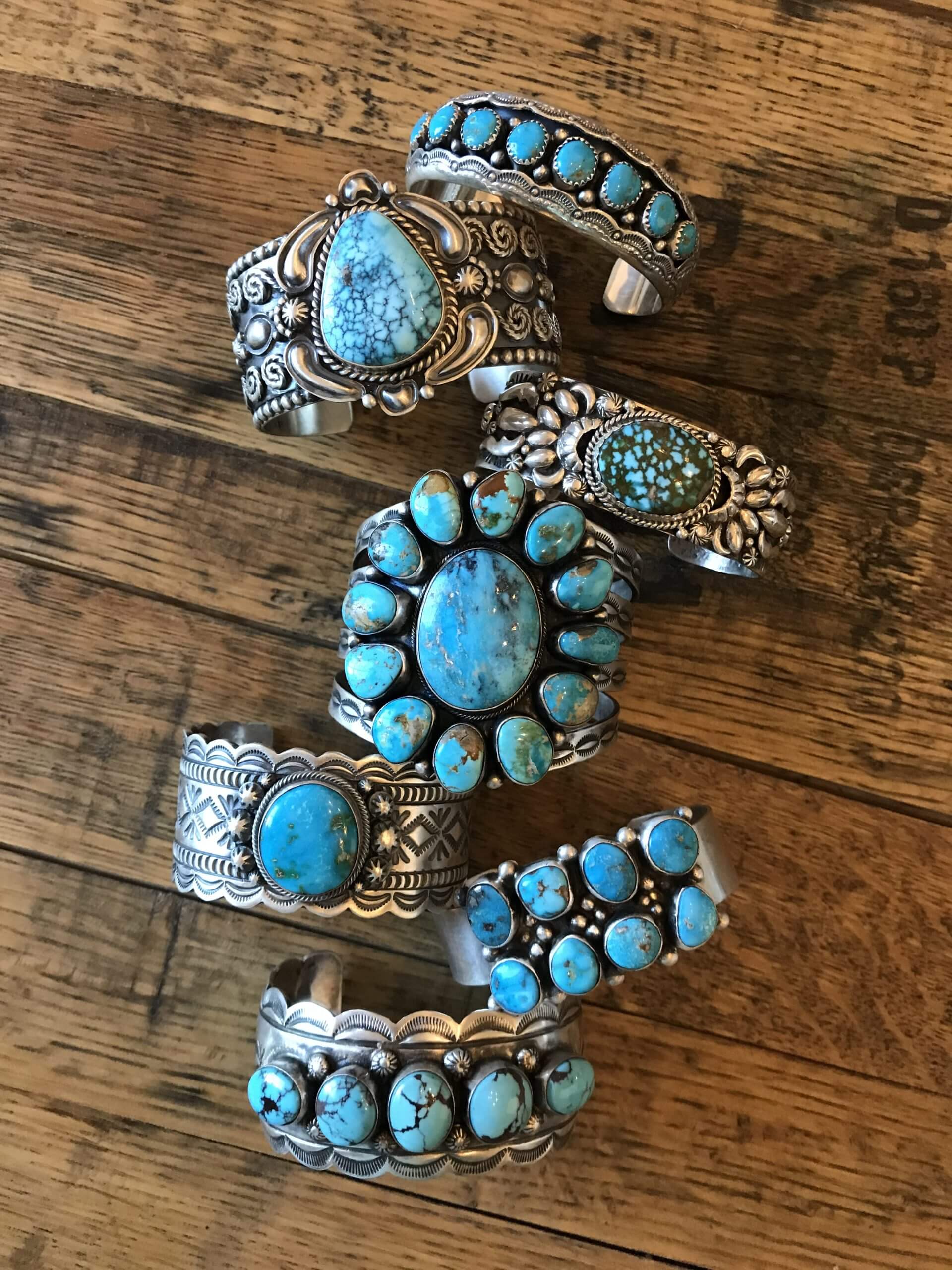
Enhancements and Treatments in the Turquoise Trade
Stabilization of Turquoise
Stabilization is a common treatment used in the turquoise trade to enhance the durability and appearance of the gemstone. Turquoise is inherently porous and can be susceptible to damage from moisture, oils, and other substances. Stabilization involves impregnating the stone with epoxy or resin to fill the pores, making it more resistant to wear and discoloration.
The stabilization process can result in enhanced color and improved hardness, ensuring that the turquoise will better withstand daily wear. This treatment is widespread in the turquoise industry and is often used to bring out the best qualities of a stone, allowing it to preserve its beauty for generations.
Dyeing and Coloring Techniques
Dyeing and coloring techniques are employed to enhance or modify the color of turquoise, providing a broader range of options for consumers. These treatments involve the use of various dyes and pigments to introduce new colors or intensify the existing colors of the turquoise.
Commonly used dyes include iron oxides, organic compounds, and synthetic pigments. These dyes are absorbed by the porous structure of the turquoise, resulting in a transformation of its color. However, it’s important to note that dyed turquoise may be more susceptible to fading over time due to exposure to light and other environmental factors.
Due to the prevalence of dyeing and coloring techniques, it is essential for consumers to be aware of any treatments that may have been applied to the turquoise they are purchasing. Transparent and reliable disclosure of treatments is crucial in maintaining transparency and ensuring informed purchasing decisions.
Surface Coatings and Enhancements
Surface coatings are another common practice in the treatment of turquoise. These coatings involve the application of substances such as wax, oils, resins, or polymers to the surface of the gemstone. The purpose of these coatings is to enhance the luster and improve the overall appearance of the turquoise.
Surface coatings can give the turquoise a brighter or glossier finish, making it more visually appealing. However, it’s important to note that these coatings are not permanent and may wear off over time, requiring periodic reapplication to maintain their effect.
As with other treatments, disclosure of surface coatings is crucial in the turquoise trade to maintain transparency and provide consumers with accurate information about the gemstone they are purchasing.
In conclusion, turquoise is a gemstone that has been cherished for its captivating beauty for thousands of years. From its early discovery and use in ancient cultures to its prominence in Native American and Southwestern jewelry, turquoise has left an indelible mark on human history.
The geological formation and composition of turquoise, with its intricate process and trace elements, contribute to its unique color and charm. As the birthstone for December, turquoise holds immense cultural significance and is believed to possess powerful protective properties.
Factors such as color grading, matrix patterns, and polish play a significant role in determining the value of turquoise. The fascination with spiderweb turquoise, its demand, and the renowned mines producing this rare variety add to its allure.
Turquoise’s versatility and affordability make it a popular choice in jewelry, be it in traditional Native American designs or contemporary fashion pieces. The influence of trace elements like copper on turquoise’s color and the presence of identifying characteristics aid in distinguishing natural stones from synthetic counterparts.
Enhancements and treatments, including stabilization, dyeing, and surface coatings, are prevalent in the turquoise trade. Understanding these treatments is crucial for consumers to make informed decisions and appreciate the beauty of turquoise fully.
In essence, turquoise is a gemstone that captivates with its enchanting color and cultural significance. Its timeless appeal and rich history continue to inspire and delight jewelry lovers around the world.

